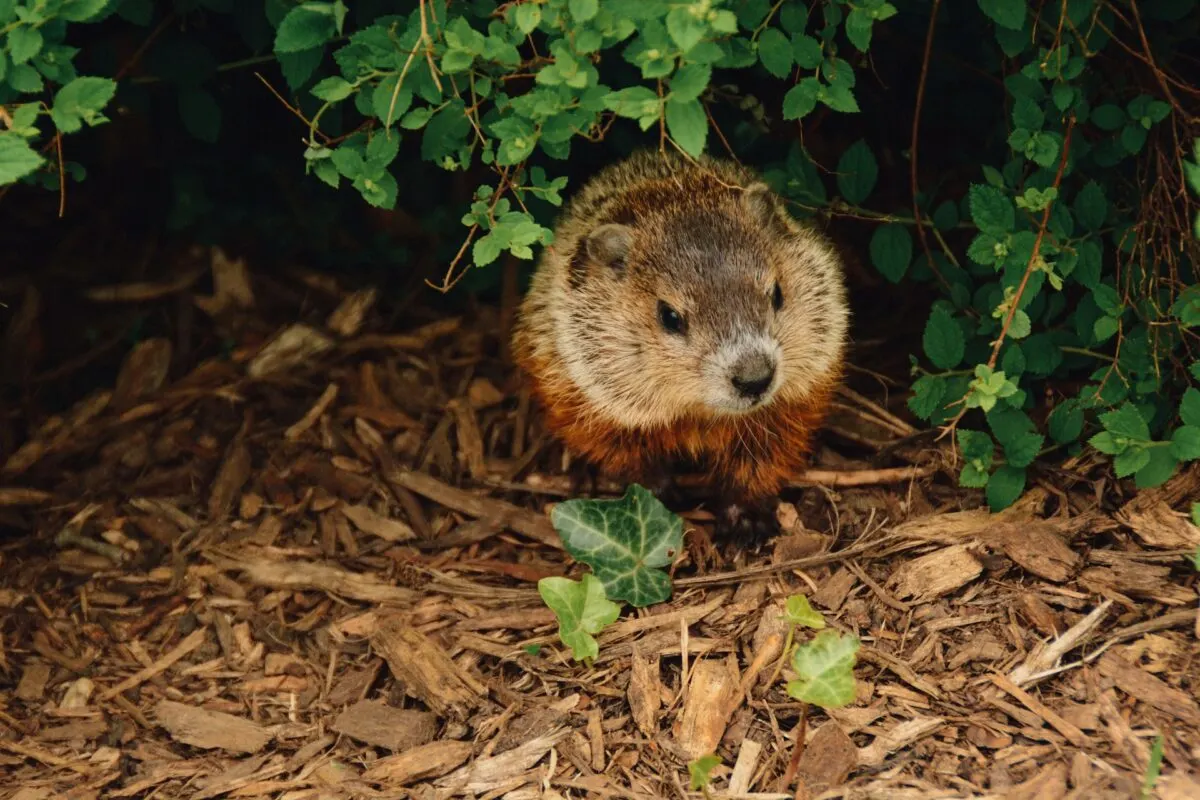Welcome to A Guide to Understanding What Groundhogs Eat. Let’s scurry right in!

Picture this: it’s a sunny day in your backyard, and you’re tending to your beautiful garden. Suddenly, you notice something out of the corner of your eye. A cute little creature with a furry brown coat and a curious expression is poking around in your garden beds. You’ve just met a groundhog – a common sight across North America.
Groundhogs, also known as woodchucks, are more than just adorable critters. These herbivores play an important role in our ecosystem, from aerating soil to providing food for predators like foxes and hawks.
But in order to thrive, groundhogs need to maintain a healthy diet. That’s why understanding what groundhogs eat is crucial for their survival – and for the health of your garden, too!
Want to scurry ahead? Click below
A Closer Look at Groundhogs
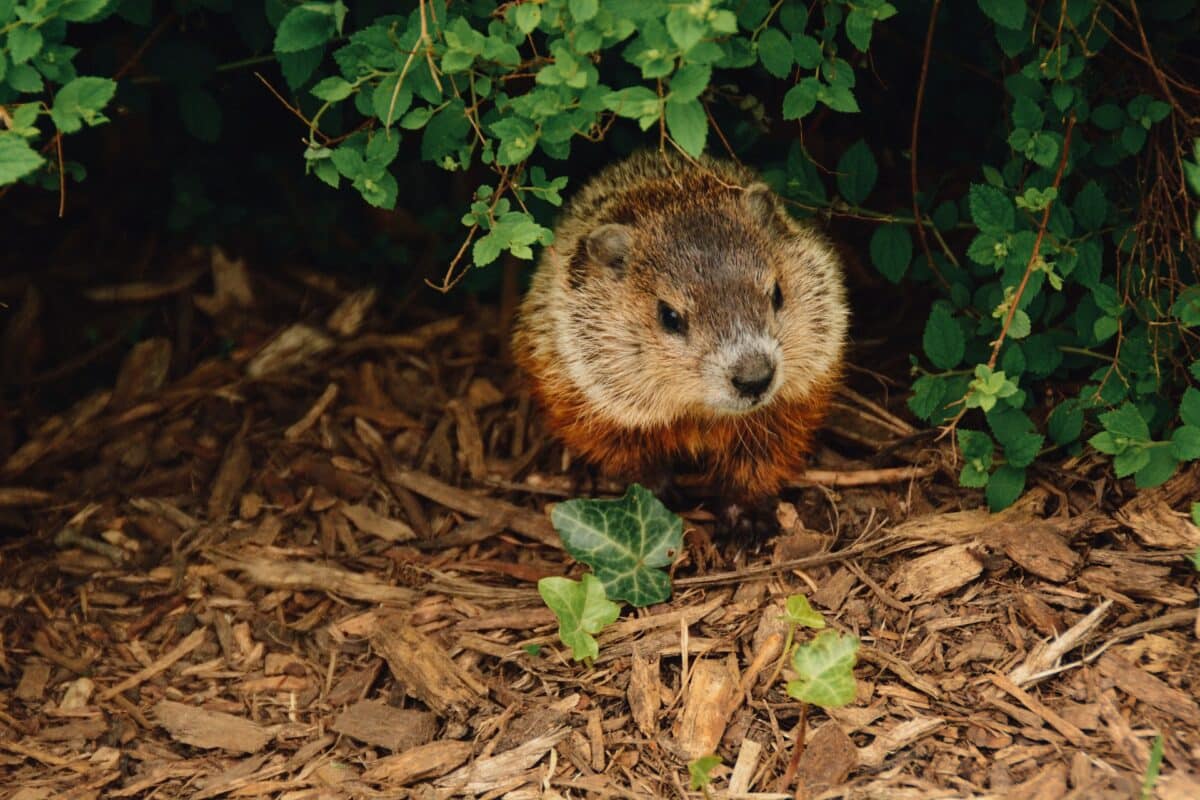
Before we dive into their diet, let’s take a closer look at these fascinating creatures. Groundhogs are part of the squirrel family and are known for their stout bodies and strong digging abilities.
They typically weigh around 5-10 pounds and can grow up to two feet long, including their bushy tails. Groundhogs also have sharp claws and teeth, which they use for digging burrows and defending themselves against predators.
Why Understanding Their Diet is Important
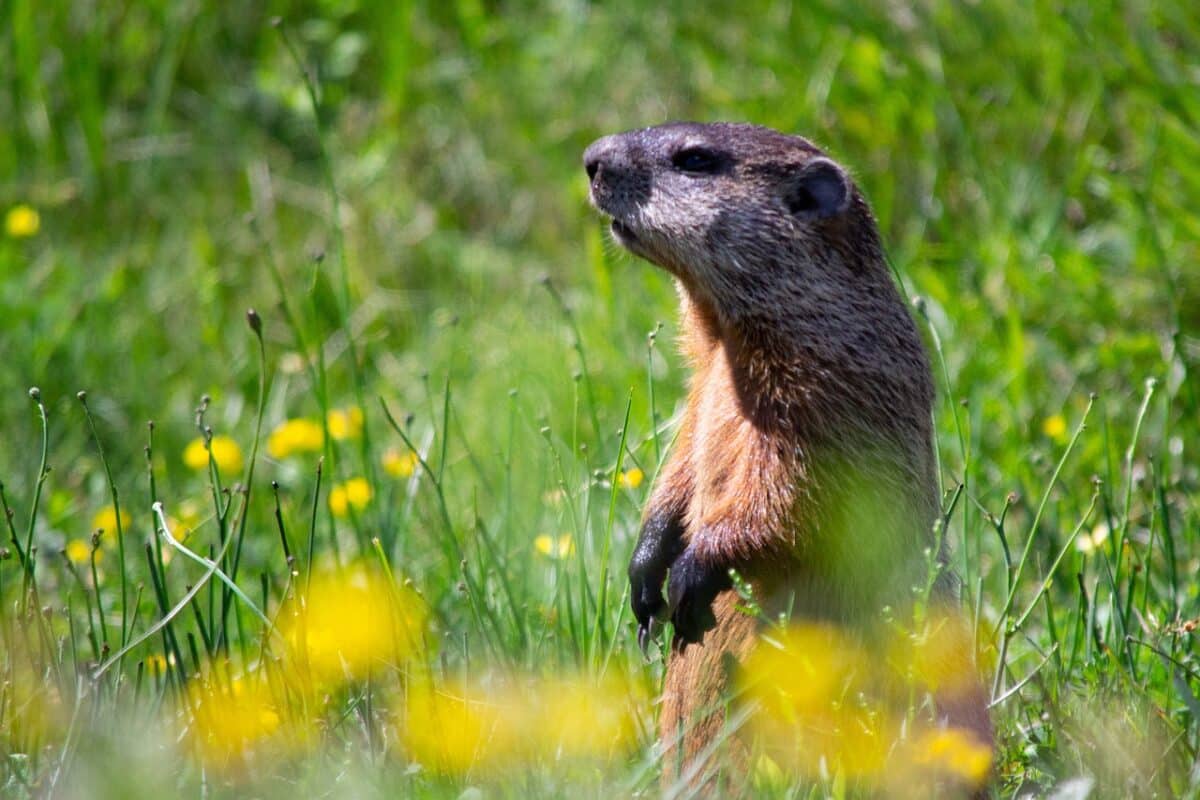
Now, you might be wondering – why is it so important to understand what groundhogs eat? Well, for starters, their diet affects their health and well-being. A balanced diet that includes a variety of plants, fruits, and vegetables is crucial for their survival.
But that’s not all – groundhogs can also be a nuisance to gardeners and farmers. Their voracious appetite can quickly destroy a garden or crop, causing frustration and even financial loss. By understanding what groundhogs eat, we can take steps to protect our plants and prevent damage.
Groundhog Diet: Herbivores at Heart
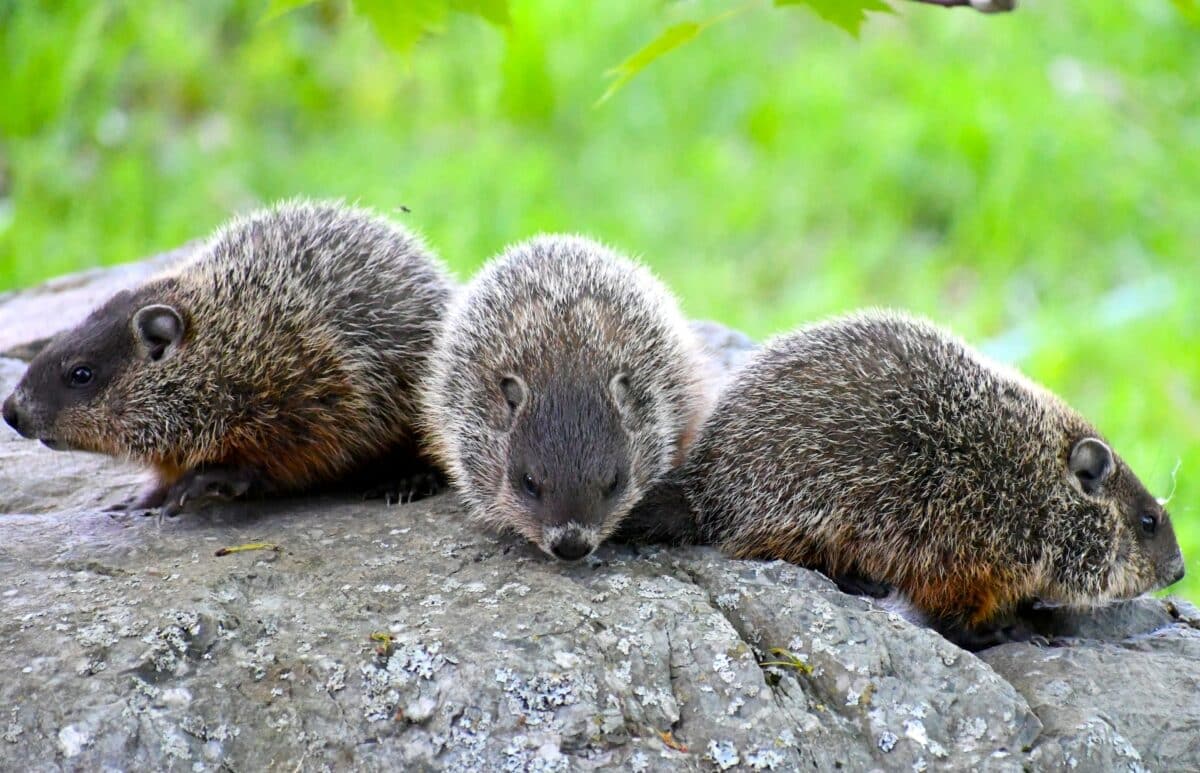
Groundhogs are strict herbivores, meaning they rely solely on plants to provide them with the nutrients they need to survive. In fact, their digestive systems are specially adapted to process plant material.
They have large, powerful jaws and sharp, chisel-like teeth ideal for gnawing on tough vegetation.
- Primary Foods
Groundhogs are one of the most well-known animals in North America, and for a good reason. With their cute and fuzzy exterior, they capture the hearts of many. But there’s more to these creatures than just their adorable appearance.
A critical aspect of groundhog behavior that is often overlooked is their diet. Groundhogs are strict herbivores and rely on plants to provide the nutrients they need to survive.
The Basics of a Groundhog’s Diet
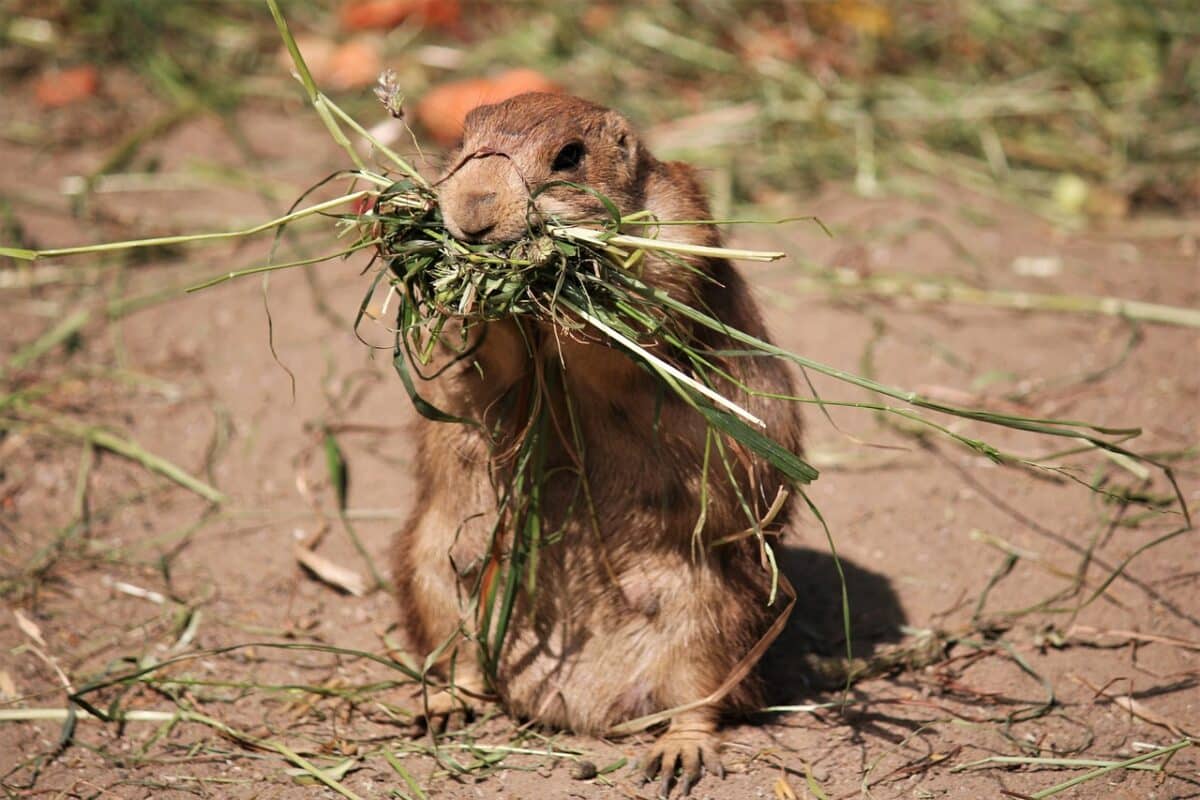
As we mentioned earlier, groundhogs are herbivores at heart. Their digestive systems are specially adapted to process plant material, and they have large, powerful jaws and sharp, chisel-like teeth that are perfect for gnawing on thorny vegetation.
While groundhogs have been known to snack on insects and small animals occasionally, most of their diet consists of plant material.
- Grasses and Forbs: The Bulk of Their Diet
The primary foods in a groundhog’s diet include grasses and forbs. These broad-leafed plants grow close to the ground, making them easy for groundhogs to access.
Groundhogs are particularly fond of timothy grass, bluegrass, and fescue. They also enjoy forbs such as dandelions, clover, and plantain. These plants are nutrient-rich and provide groundhogs with the bulk of their daily diet.
- Fruits and Berries: A Sweet Treat
While groundhogs primarily eat grasses and forbs, they also enjoy fruits and berries in season. Not only do these provide them with a burst of natural sugar, but they also offer additional nutrients that are important for their health.
Some of the fruits and berries that groundhogs love include apples, blackberries, and raspberries.
- Vegetables and Crops
Groundhogs have a reputation for being garden pests, and for a good reason. They’re known to munch on vegetables and crops when available, which can cause frustration for gardeners.
However, it’s important to remember that groundhogs follow their instincts. They’re attracted to the scent of fresh plants and will happily chow down on veggies like lettuce, beans, and corn.
Here are some examples of the vegetables and crops that groundhogs love:
- Lettuce
- Beans
- Corn
- Carrots
Secondary Foods
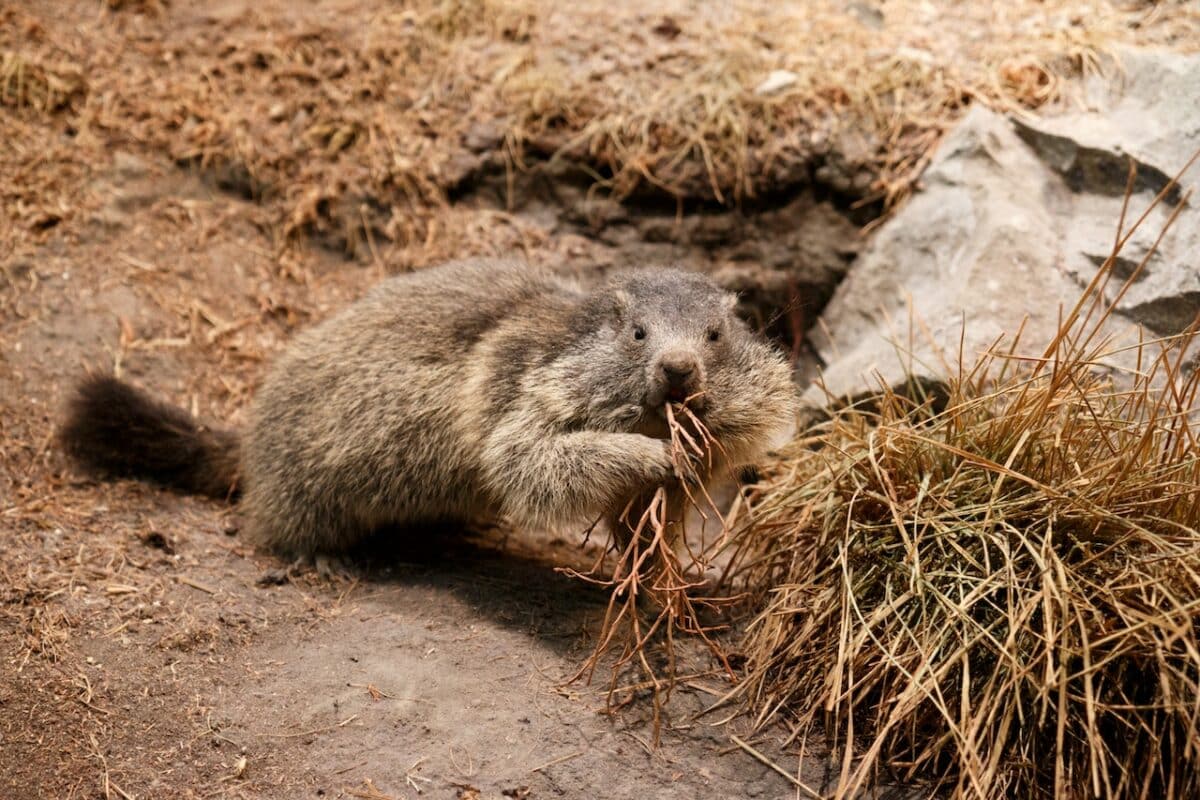
While groundhogs’ primary diet consists of plant material, they’ll also consume secondary foods when necessary. These include bark and twigs, which they might nibble on during the winter when food is scarce. They might also eat insects and small animals like snails and slugs, but these make up a tiny portion of their diet. Here are some examples of the secondary foods that groundhogs might eat:
- Bark: Oak, hickory, maple
- Twigs: Redbud, dogwood, sumac
- Insects: Snails, slugs, beetles
The Importance of a Varied Diet
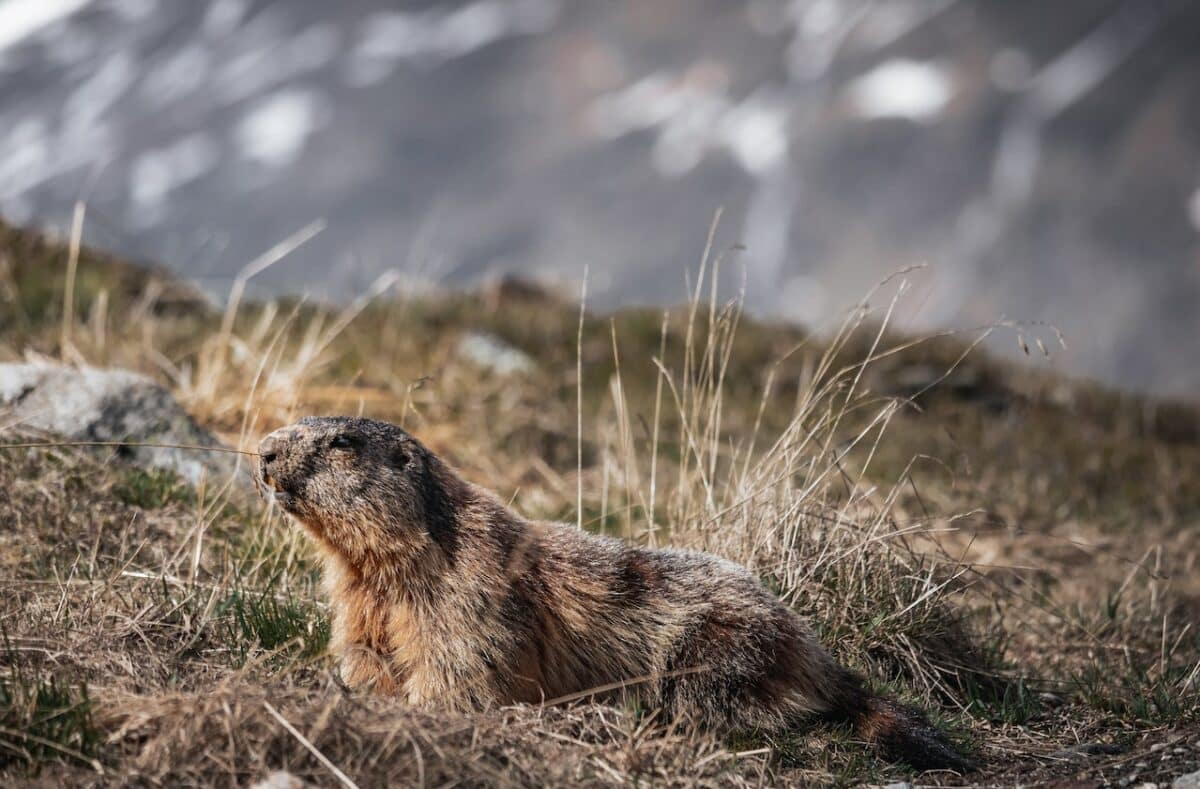
Groundhogs require a diverse and balanced diet to stay healthy and happy. Eating a variety of plant materials provides them with the nutrients they need to thrive.
Additionally, having access to different types of food can help prevent boredom and keep them mentally stimulated. A groundhog with a varied diet is a happy groundhog!
Attracting Groundhogs to Your Yard
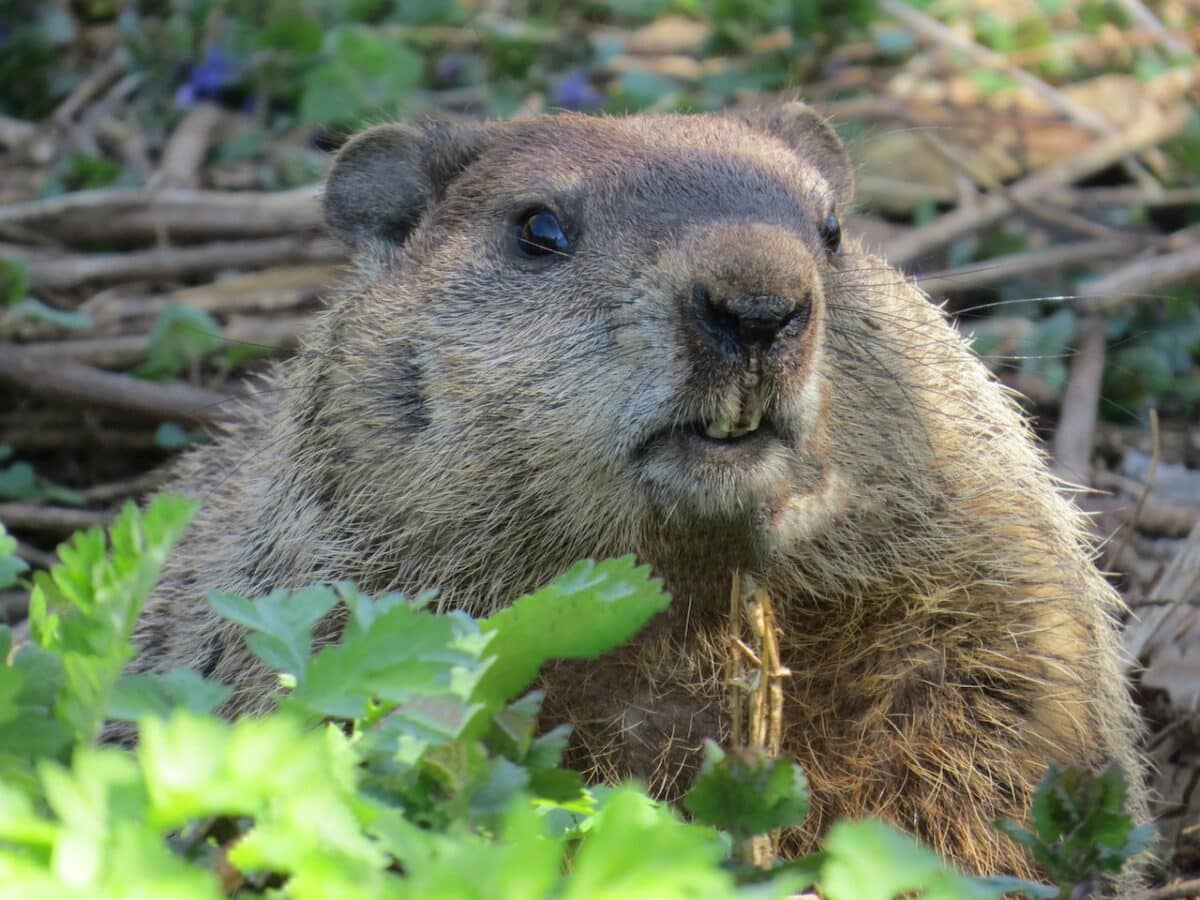
If you’re interested in attracting groundhogs to your yard, you can do a few things. Planting a variety of vegetation is vital.
Consider including grasses, forbs, fruits, and vegetables in your garden to provide groundhogs with a diverse selection of foods. Just be prepared for them to munch on your veggies – it’s all part of their natural behavior!
Did you know that groundhogs are known to eat their feces?
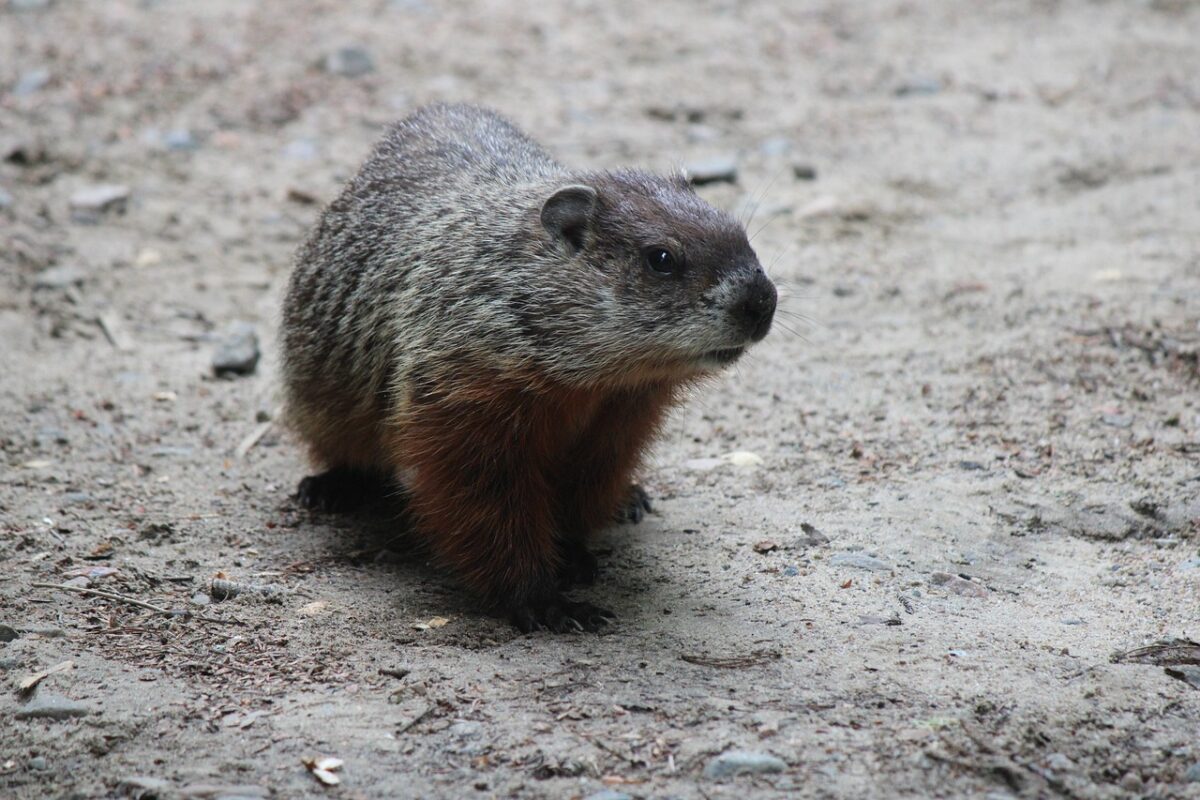
While it might sound gross, this behavior is beneficial to their health. By consuming their feces, groundhogs can extract additional nutrients from their food.
Additionally, groundhogs can adjust their diet based on their needs. For example, they might consume more insects and small animals if they need more protein.
What Types of Insects and Small Animals do Groundhogs eat?

Groundhogs are primarily herbivorous animals but also have a carnivorous side to their diet. Insects and small animals comprise a small portion of their diet but can still play a crucial role in their health and well-being.
Here, we’ll take a closer look at the types of insects, and small animals groundhogs eat.
Beetles
Groundhogs have a particular affinity for beetles, and they are known to feed on several species of beetles, including ground beetles, ladybugs, and click beetles. Beetles are a great source of protein for groundhogs, which is essential for muscle and tissue growth and repair.
Grasshoppers
Grasshoppers are another insect that groundhogs are known to eat. These insects are abundant in the summer months and provide groundhogs with a good source of protein. In addition to protein, grasshoppers provide groundhogs with essential vitamins and minerals.
Caterpillars
Caterpillars are another favorite food of groundhogs. These insects are rich in protein and can be found in abundance in the spring and summer months. Groundhogs will often climb trees to feed on the leaves and branches where caterpillars reside.
Crickets
Crickets are another insect that groundhogs eat, and they are high in protein and can be found in large numbers in summer. Groundhogs will often dig shallow holes near the base of plants where crickets congregate to feed.
Snails and Slugs
Groundhogs are also known to eat snails and slugs. While not as high in protein as insects, snails, and slugs are still an essential source of nutrition for groundhogs. They are also a good source of calcium, which is necessary for strong bones.
Frogs and Toads
Groundhogs are opportunistic feeders who eat frogs and toads when they can catch them. These tiny amphibians are high in protein and are an excellent source of nutrition for groundhogs.
Mice and Other Small Mammals
Groundhogs occasionally eat small mammals such as mice, voles, and shrews. These animals provide groundhogs with a high protein and are a valuable food source when vegetation is scarce.
Birds and Eggs
Groundhogs will also eat birds and their eggs. While not a significant portion of their diet, groundhogs will raid nests and eat eggs and young birds when the opportunity presents itself.
Snakes
Groundhogs are not known for being big fans of snakes, but they will eat them if they are hungry enough. Snakes provide groundhogs with a good source of protein and can be a valuable food source during times of scarcity.
PS: While we’ve listed some specific types of insects that groundhogs eat, it’s worth noting that insects, as a whole, make up a significant portion of their diet. Insects are abundant and provide groundhogs with a good source of protein, vitamins, and minerals.
Do Groundhogs Bite?
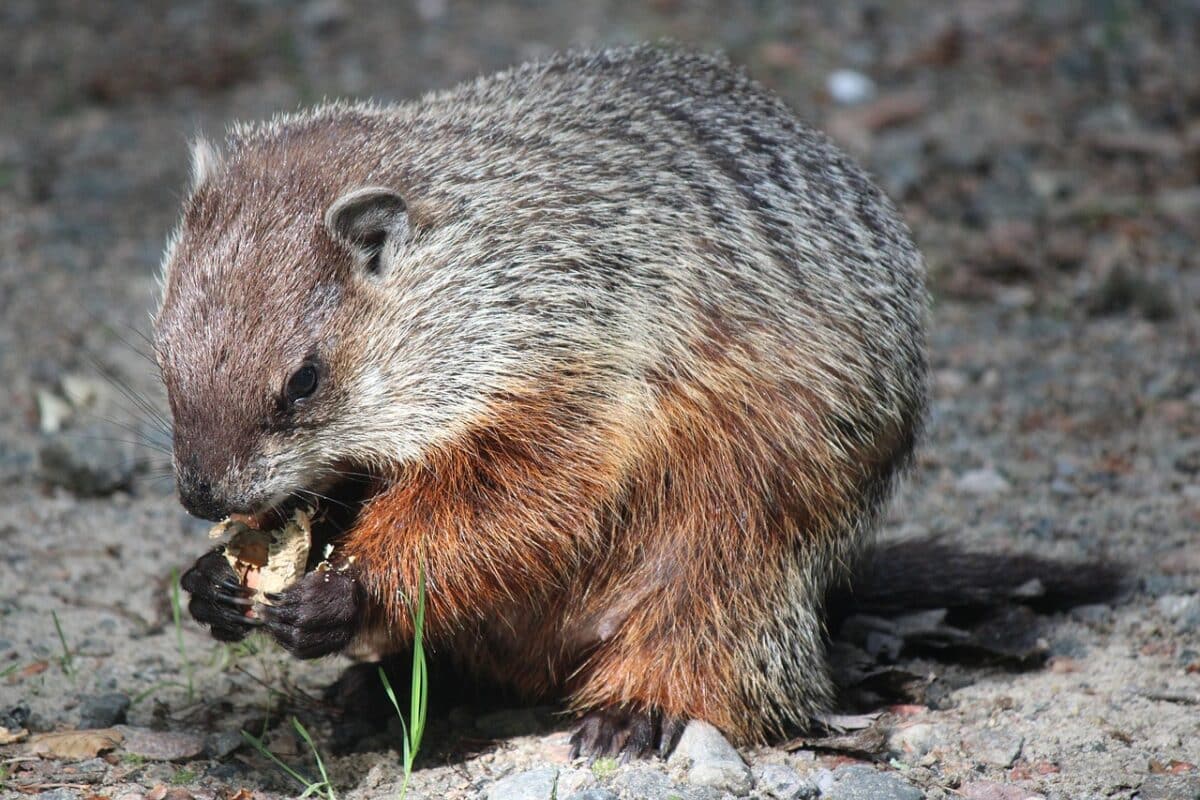
Groundhogs, also known as woodchucks, are generally known for their cute and cuddly appearance. They have become popular in folklore and are often depicted as friendly animals. However, like wild animals, they can bite humans if they feel threatened or provoked.
Groundhogs are usually not aggressive towards humans and will try to avoid confrontation if possible. They will often retreat to their burrows if they sense danger and only attack if they feel cornered or threatened.
If you encounter a groundhog that doesn’t appear very lovely, it is best to give it space and avoid approaching it. It is also important to note that groundhogs can carry diseases like rabies, which can be transmitted through bites.
Preventing Groundhog Bites
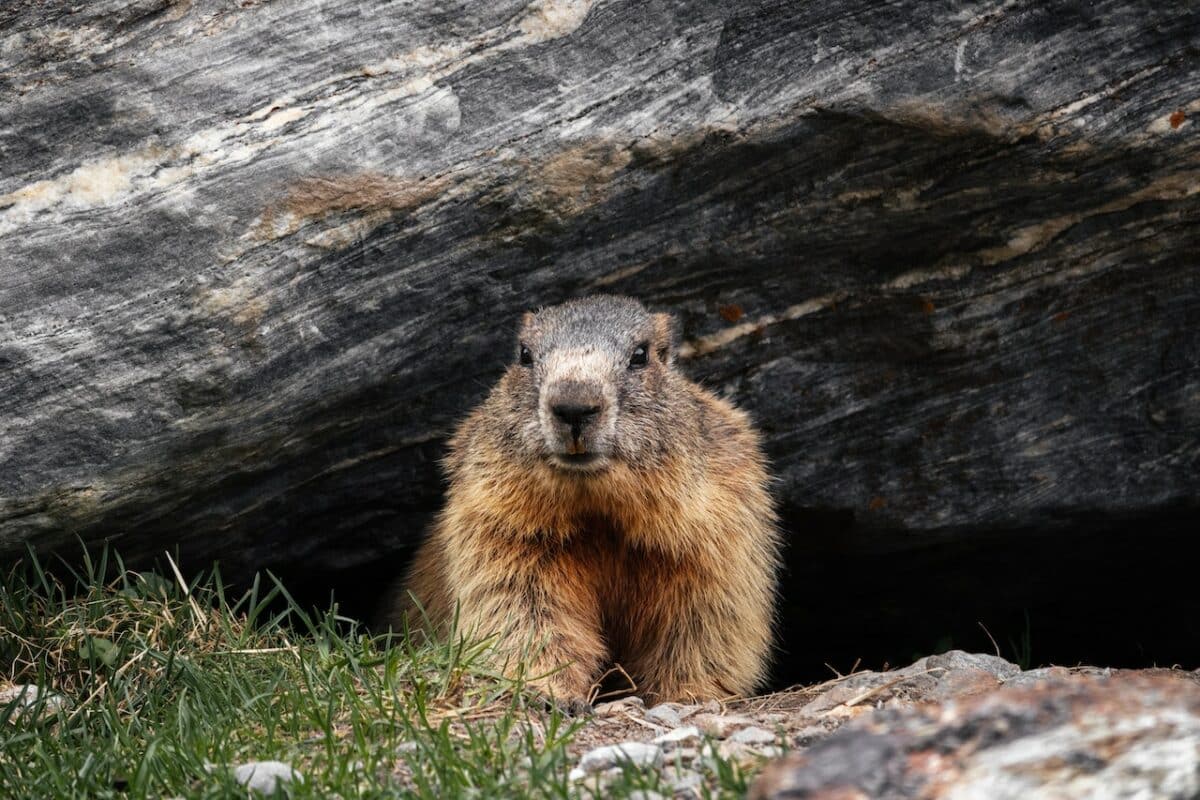
There are several steps you can take to prevent groundhog bites:
- Keep your distance
If you encounter a groundhog, give it plenty of space and avoid approaching it. Try to stay at least 10 feet away from the animal.
- Don’t provoke the animal.
Groundhogs are generally not aggressive, but they can become agitated if they feel threatened. Avoid making loud noises or sudden movements that could scare the animal.
- Keep pets on a leash.
If you’re walking your dog in an area where groundhogs are present, keep your pet on a leash to prevent it from chasing or approaching the animal.
- Secure garbage cans
Groundhogs are attracted to food sources and may be drawn to your property if you have unsecured garbage cans or compost piles. Make sure your trash is stored in secure containers to prevent attracting wildlife.
- Block burrow entrances
If groundhogs have taken up residence on your property, you may want to consider blocking the entrance to their burrow, and this can help discourage the animals from living on your property.
What to Do if Bitten by a Groundhog
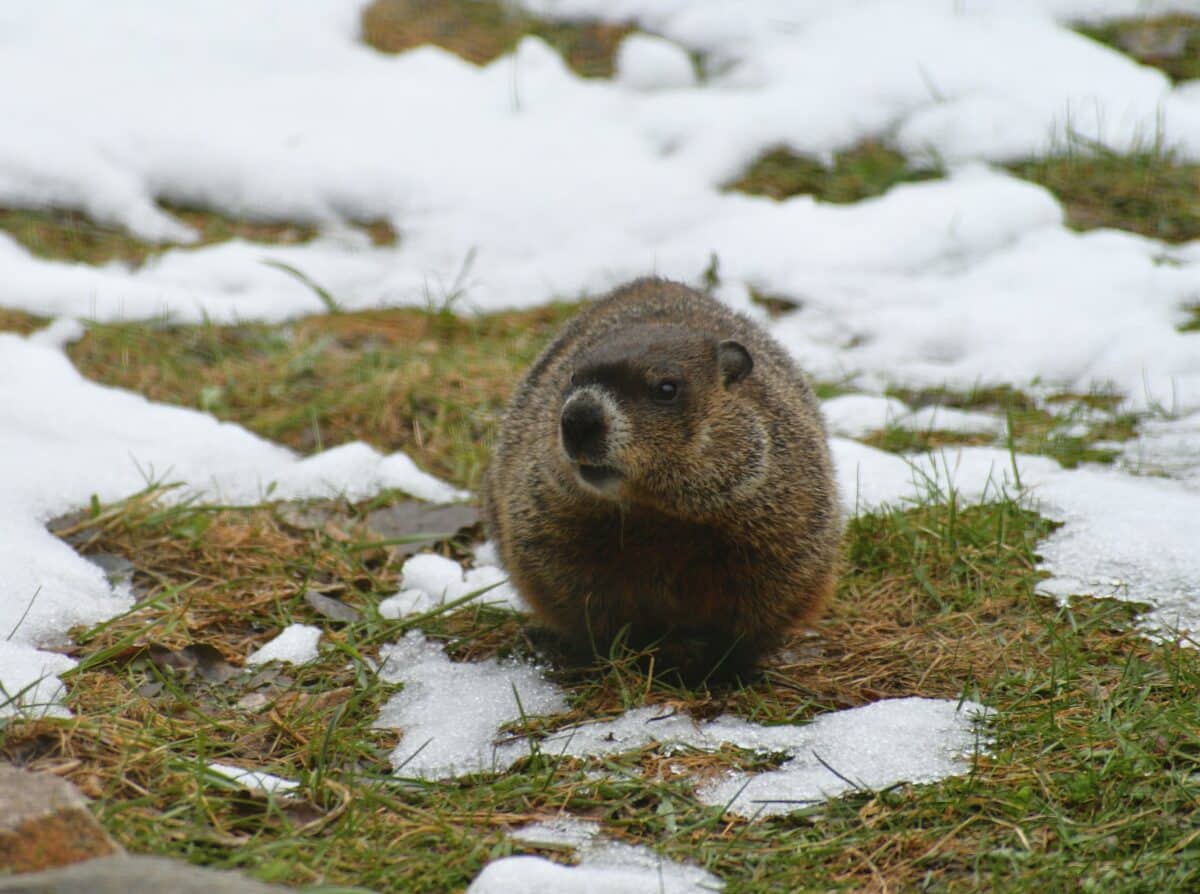
If a groundhog bites you, it is essential to seek medical attention immediately. Even if the wound appears minor, groundhogs can carry diseases that can be transmitted through bites. Your doctor may recommend a tetanus shot or antibiotics to prevent infection.
In addition to seeking medical attention, reporting the incident to your local animal control agency is essential. They can help determine if the animal was rabid or had any other diseases and can take steps to prevent further incidents.
Can A Groundhog Be a Pet?
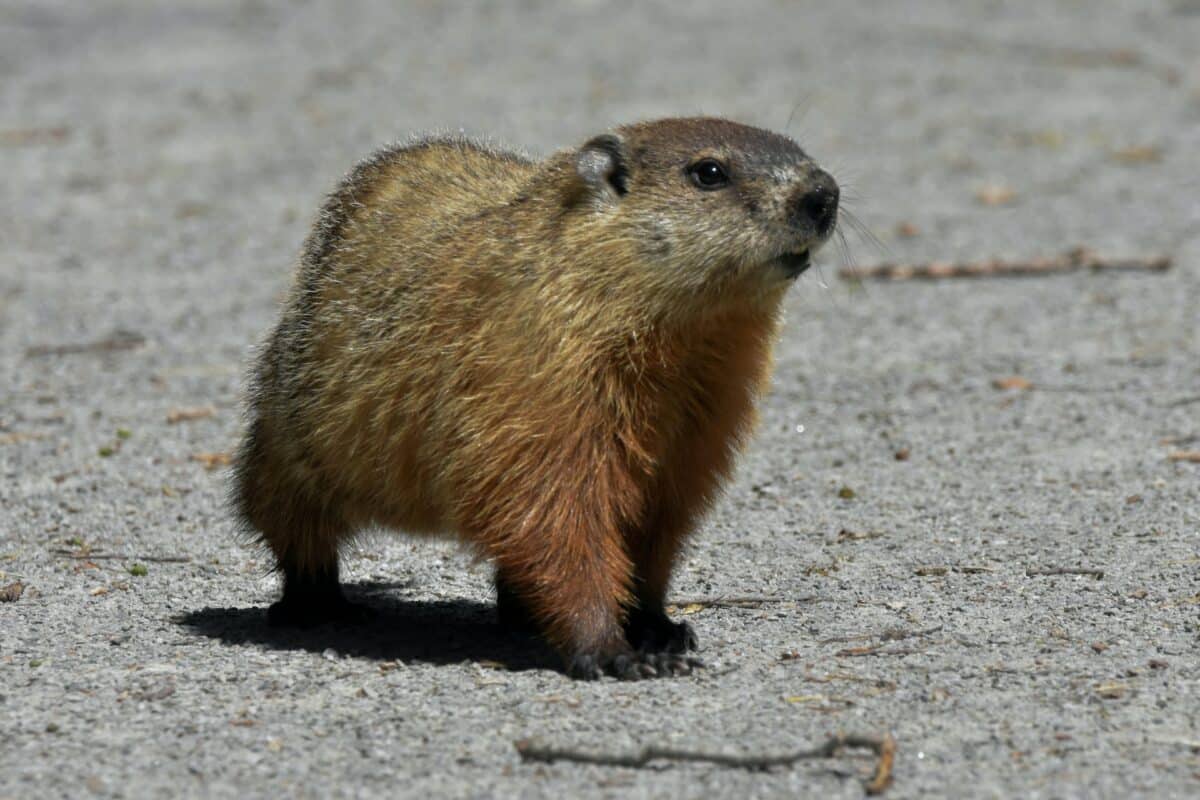
Groundhogs are wild animals and are not typically kept as pets. While they may appear cute and cuddly, they are not domesticated animals and have specific needs that are difficult to meet in a home setting.
In some states, keeping a groundhog as a pet is illegal without a special permit. ThiGroundhogse considered wild animals and can pose a risk to humans and other pets.
Additionally, groundhogs have specific dietary and environmental needs that are difficult to replicate in a home. They require a lot of space to move around, dig, access to fr vegetation, and a varied diet to stay healthy.
They also have the instinct to hibernate during winter, which can be challenging to replicate in a home setting.
Even if it were legal to keep a groundhog as a pet, it is not recommended for most people. Groundhogs are not social animals and prefer to live alone in the wild. They can become aggressive if threatened or cornered, and their sharp teeth and claws can cause serious injury.
What Animal Kills Groundhogs?
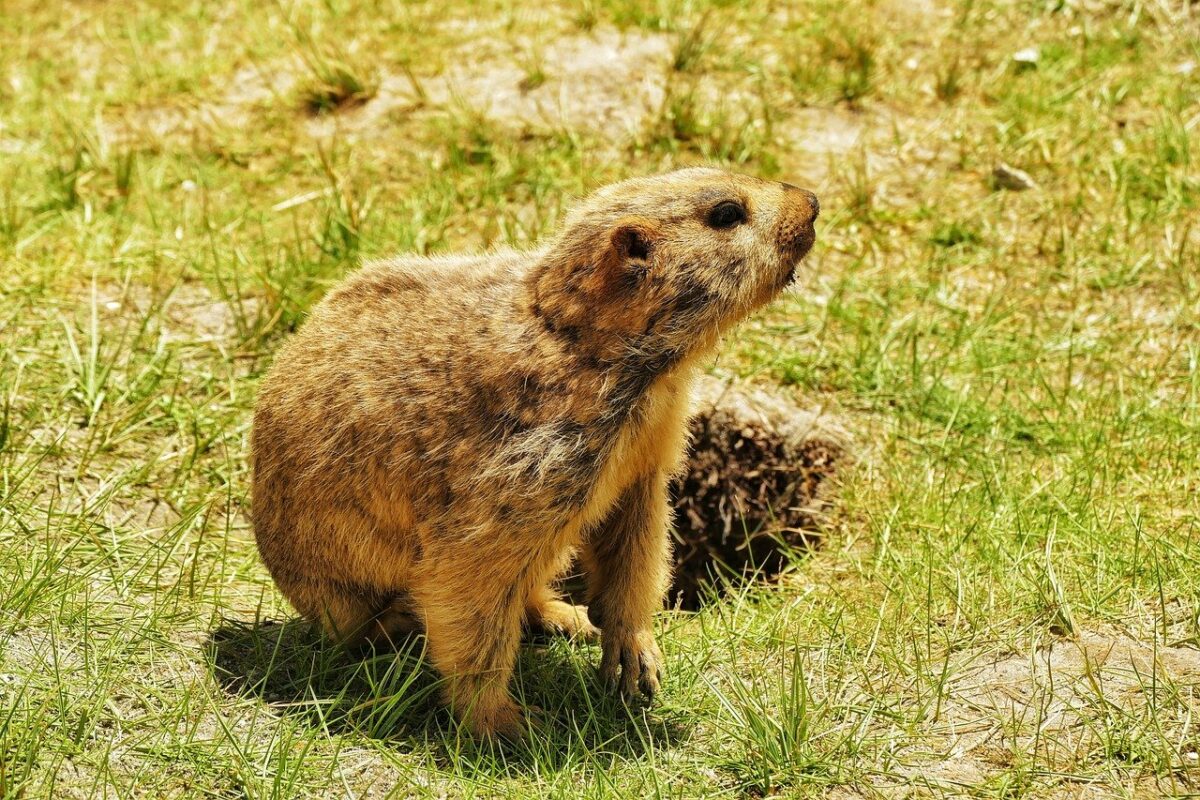
Groundhogs are known for their impressive digging skills and cute, cuddly appearance. But, like all animals, they have their predators.
So, what animal kills groundhogs?
One of the most common predators of groundhogs is the red fox. These sly and agile hunters are known for their ability to catch small mammals like groundhogs and often prey on them in the wild.
Foxes are opportunistic hunters, meaning they will eat almost anything they can catch, so groundhogs are just one item on their menu.
Another predator of groundhogs is the coyote. These highly adaptable canines are found all over North America and are known for their ability to hunt various prey, including groundhogs. Coyotes are intelligent hunters who often use their senses of smell and hearing to track their targets.
Birds of prey, such as hawks and owls, are also known to prey on groundhogs. These birds use their sharp talons and powerful beaks to catch and kill their game. They often hunt during the day or dusk, when groundhogs are most active.
Domesticated dogs and cats can also pose a threat to groundhogs. A groundhog could become prey if it ventures into a yard with a dog or cat. However, it’s important to note that domesticated pets should not be encouraged to hunt groundhogs, as they are protected in some states.
Can A Groundhog Hurt a Dog?
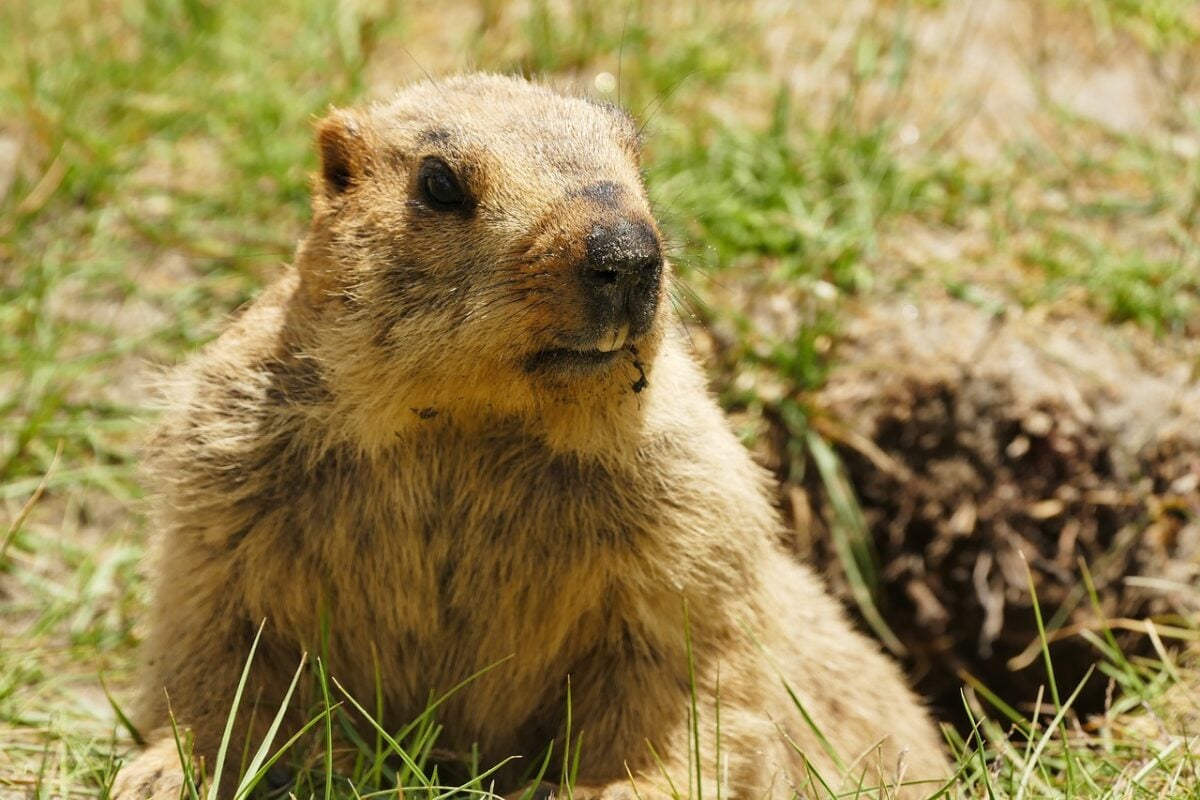
Many people wonder whether a groundhog can hurt a dog, especially if they have a furry friend that likes to chase these critters in the backyard. The answer to this question is that it’s unlikely but not impossible.
Groundhogs are not known to be aggressive animals and will generally try to avoid confrontation if possible. However, if they feel threatened, they may defend themselves by biting, scratching, or even releasing a musky odor from their scent glands. In most cases, these defensive measures are enough to scare off a potential predator, but they can cause some harm to a dog if the encounter turns physical.
It’s important to note that dogs can also threaten groundhogs. If a dog catches a groundhog, it may injure or kill it intentionally or accidentally.
Supervise your pets outside and keep them on a leash or in a secure area if you know groundhogs are in your yard.
Can Groundhogs Give Rabies?
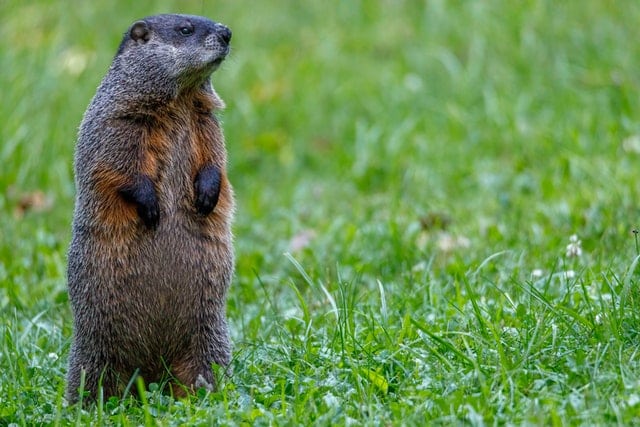
In rare cases, a groundhog may carry a disease that can be transmitted to dogs, such as rabies or tularemia. Suppose your dog comes into contact with a groundhog and shows any signs of illness, such as lethargy, loss of appetite, or unusual behavior. In that case, you should take them to a veterinarian as soon as possible.
Woodchucks have an average lifespan of 6-8 years in the wild. However, groundhogs in captivity can live up to 14 years. Factors such as habitat destruction, hunting, and predation can contribute to a shorter lifespan for groundhogs in the wild.
It’s worth noting that groundhogs in suburban and urban areas often have a shorter lifespan due to encounters with humans and domestic pets. For example, cars may hit groundhogs while crossing roads or be attacked by dogs and cats.
Despite their relatively short lifespan, groundhogs have considered a keystone species because they create burrows that other animals, such as rabbits and skunks, use for shelter.
Wrapping Up on What Groundhogs Eat
Understanding what groundhogs eat is crucial for maintaining a healthy garden and preserving the lives of these fascinating animals.
While they may seem like a nuisance to some, they play an essential role in their ecosystem and deserve our respect and admiration. You can coexist with these furry friends in harmony by implementing some of the tips and tricks outlined in this guide.
So go ahead and enjoy your garden, but remember to watch for the secret lives of garden pests – you never know what you might learn!
Thanks for following along with us! Next up What do dragonflies eat?
Join our Forum for free today!

- Kind Elephant Merciful To Lion Cubs - July 22, 2024
- Beachgoers Save Massive Shark Stranded In Florida - July 22, 2024
- Pit Bull Rescued From Being Chained Its Whole Life Gets A Surprise - July 21, 2024

